Our Year of the Raven retrospective continues with The Boomsday Project, a set which was initially seen as a grossly unimpactful one, especially in light of the Genn/Baku scourge dominating the ladder at the time. Has time (and their early rotation) been kind to this expansion? It turns out TBP has aged a lot better than it seemed at first, with many class cards becoming staples in a wide variety of decks.
Legendary Spells
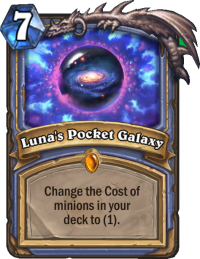
After adding Legendary weapons in Kobolds and Catacombs, Legendary spells were a logical segment of design space to explore. Though it must have been very difficult to balance them appropriately (they won’t be very consistent due to the deckbuilding restrictions and their high initiative means they cannot be instant game-winners by themselves), Team 5 knocked it out of the park with these cards. Apart from Hunter’s utter garbage Flark's Boom-Zooka, every other Legendary spell saw competitive play in vastly different roles across disparate archetypes.
Floop's Glorious Gloop remained a fringe inclusion in mostly Token-based Druid builds, Luna's Pocket Galaxy became a staple in slower Mage decks (especially after the community realized its true potential after its ultimately reverted buff to five mana), Kangor's Endless Army played a part in early, less effective Mech Paladin builds, Zerek's Cloning Gallery was an OTK tool in Mind Blast-based Resurrect Priest decks and is still played in the current, more value-oriented builds. Myra's Unstable Element was a key part of Odd Rogue, The Boomship enabled an OTK with Malygos and Mecha'thun for Warrior, The Storm Bringer was a strong tech choice in Quest Shaman and Warlock’s The Soularium (first seen as an option for an event-exclusive Arena card which the community didn’t vote in!) instantly became a staple in Zoo. None of these cards were broken, they each had unique effects and they were relevant in the metagame. 7.5/9 is about as good as it gets without being completely overpowered, so hats off for this one.
Omega Cards
The smaller keywords haven’t performed as well. Omega cards – which had a bonus effect when played on ten mana – were supposed to present a choice between smaller immediate payoffs and a stronger late-game play. Unfortunately, neither options were strong enough in most cases to warrant inclusion. Apart from Omega Assembly in Control Warrior, none of the other cards ever saw play (though Omega Agent was a really strong card in Arena due to its incredible value for the price).
Project Cards
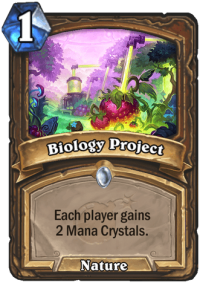
The problem with the Project cards as a whole is that it’s very difficult to make a symmetrical effect valuable for the player to include, sacrificing a card slot in order to give their opponent a resource they will get to utilize first. Biology Project wasn’t even played in Taunt Druid or any other “Big” archetype: most often, you’d end up floating the bonus mana while giving your opponent an immediate tempo benefit on the following turn. Demonic Project was a fringe disruption tool but nowhere near reliable enough to warrant inclusion in the long run. Research Project could technically work in some incredibly burn-heavy deck, Coldlight Oracle-style, but that hasn’t been the case in Standard. Weapons Project ended up as the most useful of them all, a net zero proposition from a health perspective but with multiple upsides. Not only does it serve as a source of immediate early-game removal for the Warrior player, it can destroy more valuable weapons on the opponent’s side and could be comboed with Harrison Jones for card draw turn seven onwards.
Magnetic Fields, Pt. 2
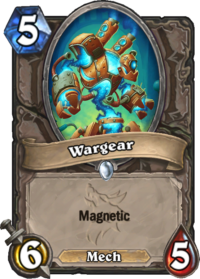
On the surface, Magnetic seems like a keyword with nothing but a net upside. You still have the option to play the minion on its own, but you can also stack it as a buff when the circumstances are right. In many cases, you don’t even have to sacrifice too many stats for the privilege.
So why hasn’t it taken off as much as you would have expected it to? First of all, the class-specific options were limited to Hunter, Warrior and Paladin, and no further Magnetic minions were printed in later sets. No matter how many new Mechs were added since, the limited number of options kneecapped the potential of aggressive Mech decks. In a year and a half of play, we’ve basically only seen two (the current Mech Paladin builds and Mech Hunter from a long time ago, though its rise had more to do with Deathrattle synergies than anything related to the Magnetic keyword or a standard tempo strategy). It is, however, an important element of Battlegrounds, where Mechs are always perennial contenders thanks to Cobalt Guardian.
Notable Cards
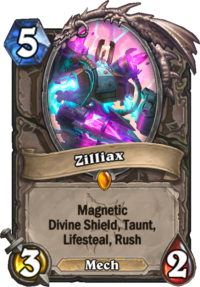
Of the slate of neutral Mech options, just a few of them made it through the grinder of the metagame. Mecharoo became a staple in aggressive decks, with Mech-based ones also running Galvanizer and Wargear. Slower Mech Hunter builds had a lot of fun with Mechanical Whelp. Though not technically a Mech, Giggling Inventor warrants a mention here, priced at a shockingly low 5 mana upon launch. It’s quite likely that its move to 7 was due to the Even/Odd considerations as it’s been a fairly harsh nerf all things considered. Zilliax, of course, is the staple card of the set, a Swiss army knife of initiative, Health gain, stall and value trading with low enough stats so as to not become overpowered – it is definitely a contender for one of the best-designed cards in the game as a whole. Mecha'thun has also become Constructed-viable with various OTK builds across multiple different classes.
A few other neutral cards also played a part: Augmented Elekk was a terrifying sight in Bomb Warrior, Whizbang the Wonderful was, quite appropriately, a wonderful idea, and Subject 9 was an integral part in Secret Hunter. Most of the glory, however, goes to the class cards this time: beyond the aforementioned legendary spells, they ended up with a plethora of useful tools from this expansion.
Druid had Dreampetal Florist to enable a bunch of disgusting combo finishers alongside the much more flexible Flobbidinous Floop. Juicy Psychmelon also wreaked havoc in Wild until the Kun the Forgotten King+Aviana deck was nerfed. Fringe Treant decks also made great use of Dendrologist and Landscaping, though their impact remained limited on the metagame even after the Mulchmuncher buff.
Hunter also had a good set. Secret Plan was great in Secret Hunter (no surprises there) while Bomb Toss saw fringe play in Mech Hunter and Jepetto Joybuzz-based OTK burn builds. Mech Hunter also made great use of Venomizer, Fireworks Tech and Spider Bomb, with the latter also playing a key part in slower Recruit Hunter builds. Even Boommaster Flark, long considered a meme card, found a home in Quest Hunter at the tail end of the Year of the Dragon. Interestingly, Necromechanic never got off the ground, even with the buff to 4 mana instead of 5.
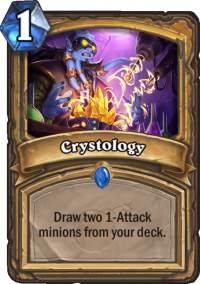
Paladin’s slate of Mech cards (Glow-Tron, Annoy-o-Module and Mechano-Egg) all saw play in the tribal deck, though the latter was also a part of fringe Reborn-based builds. Crystology became omnipresent after its somewhat unnecessary buff across all archetypes, while Shrink Ray, Prismatic Lens and Crystalsmith Kangor all became crucial tools for Holy Wrath Paladin.
Mage got strong tools both for aggressive decks with Shooting Star and Cosmic Anomaly (with strong combo potential between the two) and slower builds thanks to Astromancer, Stargazer Luna and the previously discussed Luna's Pocket Galaxy.
In retrospect, Priest could do so much stupid stuff off the back of its cards from The Boomsday Project. There was the Mecha’thun OTK with Dead Ringer draws and the pre-nerf Reckless Experimenter. Topsy Turvy, Test Subject and Extra Arms for APM Priest, with two of these three cards also playing an integral part in Divine Spirit/Inner Fire builds for a year and a half. Meanwhile, Zerek's Cloning Gallery served as a great enabler of three-digit damage output in the Mind Blast days, and now it’s merely a great source of value and consistency for the Resurrect archetype. Yikes.
Rogue had some fun with Lab Recruiter and Pogo-Hopper, plus a viable Deathrattle build with Necrium Blade, Blightnozzle Crawler and Necrium Vial later on. Their legendary spell was also a staple in all aggressive builds.
Warrior’s monstrous slate of Control options from this set still serves as a source of PTSD for many. Eternium Rover and Weapons Project enabled early stabilization, followed by the strong removal tools of Dyn-o-matic and Supercollider (criminally underrated upon reveal by many) in the mid-game. Later on, Omega Assembly and Dr. Boom, Mad Genius served as the coup de grace. The Hero card was initially seven mana, and the fact that it survived a two-mana nerf should tell you everything you need to know about its capabilities. One has to wonder whether it’s on the list of changes that are going to be reverted once the cards rotate to Wild.
In comparison, Shaman and Warlock got the short end of the stick somewhat. Thrall had Menacing Nimbus to play around with in Even Shaman, plus Voltaic Burst and Thunderhead in more aggressive builds. Electra Stormsurge was the standout performer here, with strong options across the board regardless of archetype.
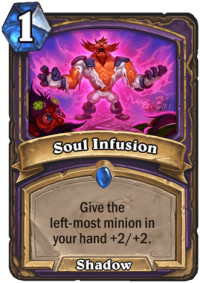
Meanwhile, Warlock also didn’t get many strong cards (at least compared to the classes above!), though the unique interactions with the heal-based Zoo deck still made it one of the most effective classes in the early days of TBP. Simply just adding Doubling Imp and Soul Infusion and their legendary spell to the mix was good enough. Spirit Bomb and Demonic Project served as fringe removal and disruption options, but neither became a staple in Evenlock builds, nor were they strong enough to help support a slow Warlock deck once Genn Greymane rotated out at the end of the Year of the Raven.
All in all, the Genn/Baku rotation plus a bit of experimentation with the Rise of the Mechs event ensured that The Boomsday Project cards ended up making a bigger impact than we expected shortly after their release. Zilliax remains a contender for an evergreen slot in the eyes of many and the tools provided by the set worked with multiple different archetypes across many classes. Though its initial impact was small, Dr. Boom’s crazy experiments certainly played an important role in Standard over the last year and a half.

Well written article. Would be interesting to see comparison of other legendaries as well, similarly to how you compared legendary spells.
Also, I am missing Sn1p-Sn4p. It was not released with Boomsday, but is considered to be Boomsday card.
You forgot Omega Devastator
Omega Devastator is not a Boomsday Project card 🙂 It was released in Rise of Shadows.